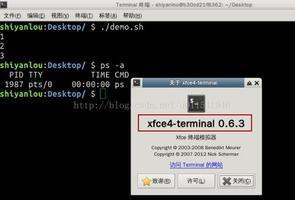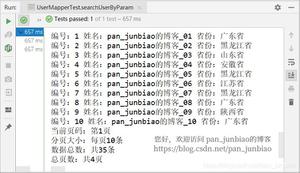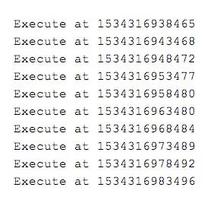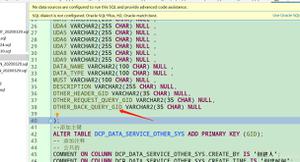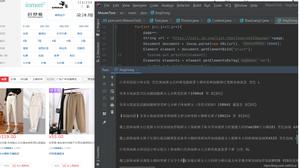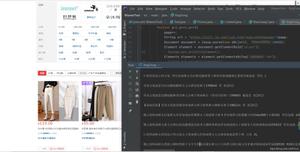【easypoi(二)使用模板导出爬坑经历】

1、开发环境,idea开发工具,windows10系统,JDK8.0;系统部署环境,CentorOS7;
2、在开发的过程中,使用模板下载文档,因为模板是固定的,只需要填写需要的信息即可;
发现问题:
模板文档放置在项目的sources/word自定义的文件夹下面,在开发的过程中,能够顺利导出word文档,但是到服务器上就导出空文档;
排查过程:
1、猜想是不是保存的临时文件错误,于是通过打印输出的文件查看,文件夹存在,但是,没有生成预想的临时文件;方法如下
StringBuilder sbd = new StringBuilder();boolean directory = dir.isDirectory();
if (directory) {
File[] files = dir.listFiles();
for (int i = 0; i < files.length; i++) {
sbd.append(files[i].getName()+":"+files[i].getPath());
sbd.append("&&&&");
}
}
2、继续猜想,是不是resources/word的文档找不到呢;通过方法,可以获取到文档;当时直接通过file是不能获取到文件的,会报错;
File sourceFile = ResourceUtils.getFile("classpath:word/test.docx"); //这种方法在linux下无法工作
可以通过
ClassPathResource resource = new ClassPathResource("word/test.docx");
也可以通过
@Resource private ResourceLoader resourceLoader;
org.springframework.core.io.Resource resource = resourceLoader.getResource("classpath:word/test.docx");
可以断定,是easypoi中在引用临时文件的时候,找不到路径报错,那么我想是不是可以使用文件复制,把test文件copy到一个临时文件,再使用这个copy的文件呢,还真有这种方法;遂解决方法一实现,copy临时文件。以下贴出简单的方法;此处借用别人的方法;
/** *
* @param path
* @return
*/
public static String convertTemplatePath(String path) {
Resource resource = new ClassPathResource(path);
FileOutputStream fileOutputStream = null;
// 将模版文件写入到 tomcat临时目录
String folder = System.getProperty("catalina.home");
File tempFile = new File(folder + File.separator + path);
// System.out.println("文件路径:" + tempFile.getPath());
// 文件存在时 不再写入
if (tempFile.exists()) {
return tempFile.getPath();
}
File parentFile = tempFile.getParentFile();
// 判断父文件夹是否存在
if (!parentFile.exists()) {
parentFile.mkdirs();
}
try {
BufferedInputStream bufferedInputStream = new BufferedInputStream(resource.getInputStream());
fileOutputStream = new FileOutputStream(tempFile);
byte[] buffer = new byte[10240];
int len = 0;
while ((len = bufferedInputStream.read(buffer)) != -1) {
fileOutputStream.write(buffer, 0, len);
}
} catch (IOException e) {
e.printStackTrace();
} finally {
if (fileOutputStream != null) {
try {
fileOutputStream.close();
} catch (IOException e) {
e.printStackTrace();
}
}
}
return tempFile.getPath();
}
问题解决;
3、以上的方法是解决的实际问题,但是多了copy的步骤,是不是应该还有更简便的方法;于是想到现在用的是springboot2,那么easypoi应该也有与之相关的版本,然后查看本项目引用的版本,如下;
<dependency> <groupId>cn.afterturn</groupId>
<artifactId>easypoi-base</artifactId>
<version>3.0.1</version>
</dependency>
<dependency>
<groupId>cn.afterturn</groupId>
<artifactId>easypoi-web</artifactId>
<version>3.0.1</version>
</dependency>
<dependency>
<groupId>cn.afterturn</groupId>
<artifactId>easypoi-annotation</artifactId>
<version>3.0.1</version>
</dependency>
并不是最新版本,于是升级下版本
<dependency> <groupId>cn.afterturn</groupId>
<artifactId>easypoi-base</artifactId>
<version>3.0.3</version>
</dependency>
<dependency>
<groupId>cn.afterturn</groupId>
<artifactId>easypoi-web</artifactId>
<version>3.0.3</version>
</dependency>
<dependency>
<groupId>cn.afterturn</groupId>
<artifactId>easypoi-annotation</artifactId>
<version>3.0.3</version>
</dependency>
或者直接引用easypoi-spring-boot-starter
<dependency> <groupId>cn.afterturn</groupId>
<artifactId>easypoi-spring-boot-starter</artifactId>
<version>3.3.0</version>
</dependency>
然后再测试,遂完美解决。
以上是 【easypoi(二)使用模板导出爬坑经历】 的全部内容, 来源链接: utcz.com/z/513692.html



